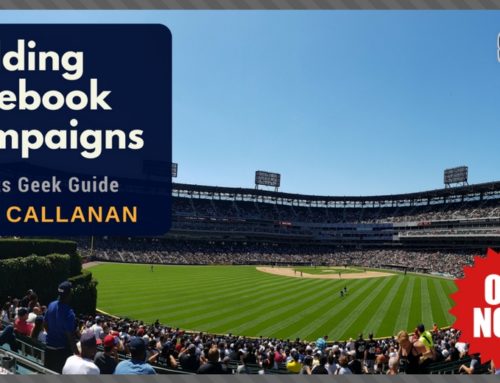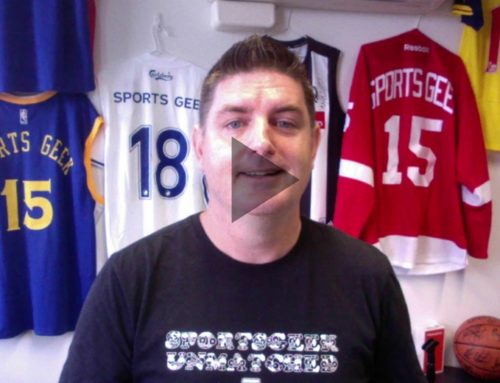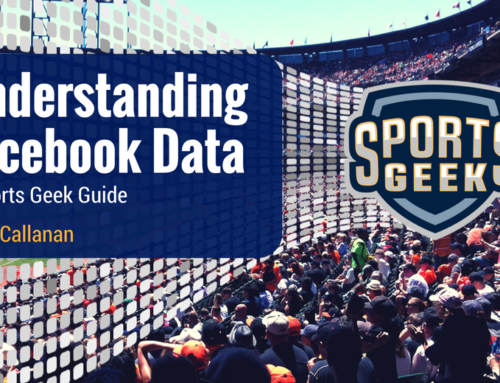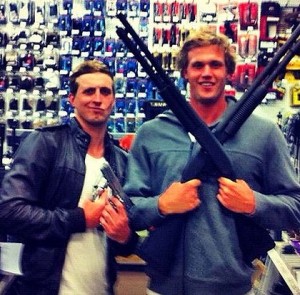 By now everyone has seen the photos of Australian Swimmers that has caused them some grief with the AOC we discussed how it could have been prevented on Harf Time.
By now everyone has seen the photos of Australian Swimmers that has caused them some grief with the AOC we discussed how it could have been prevented on Harf Time.
1. Understand Facebook Privacy settings
Facebook keeps changing their privacy settings but it is important to realise it only takes one like or comment for something to go viral.
One of the easiest privacy settings it only accepting friend requests from people you know & trust as any of them can copy your posts or photos & send them to the press.
2. At the very least have apply the “Nanna Rule”
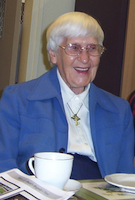 Would you be happy explaining that photo or post to your Nanna? If you'd have trouble explaining that picture to your Nanna, Mum or boss then it's probably a good idea not to post it.
Would you be happy explaining that photo or post to your Nanna? If you'd have trouble explaining that picture to your Nanna, Mum or boss then it's probably a good idea not to post it.
As discussed on Harf Time, for me I make sure it will be OK for my Auntie Kath who isn't on Facebook but ask questions of my if I posted pics that were a tad suspect. So when you post think of your Auntie Kath.
3. Develop solid rules
To make it easier give yourself clear guidelines on what you will & won't do on social media so you can stay focussed on your job. Here is some rules used by athletes we've worked with:
- NRL player George Rose (@gorgeousgrose) won't tweet after 11pm to ensure he never gets into trouble with late night tweets
- Harry O (@harry_o) tweets a photo the night before a game & doesn't look at Twitter until after the game.
- Kurt Tippett (@kurttippett4) shares his pre-game music during with morning walk each week.
- Scott Pendlebury (@SP_10) shares a game day Motivation Video & a game day Instagram pic before turning phone off
Until next week
Listen to Harf Time on Wednesdays (at 2:45pm) when Sean Callanan discuss sports digital with Daniel Harford.
Tune into Harf Time over the weekdays from 12-4pm on 1116 SEN.
Get the Sports Geek podcasts
Want to get these clips in podcast form? Subscribe here or Add to iTunes
Get the Sports Geek podcasts
Want to get these clips in podcast form? Subscribe here or Add to iTunes
Podcast transcription
THOMMO: Welcome back to the program. Thommo here sitting in the chair for Harf, and I’m joined now by the Sports Geek, that’s SportsGeekHQ, Sean Callanan, good afternoon.
SEAN: Good afternoon, Thommo.
THOMMO: Great to have you on board, very interesting. You’ve just popped in and decided that we need to have a quick chat about the effect of social media and players and sports people and what it can actually do to their careers and what they can lose out of it.
SEAN: Yeah, exactly, we’ve all seen the Nick Darcy, Kenrick Monk photos toting the guns.
THOMMO: What were they thinking?
SEAN: Again, that’s pretty much what it comes down to. They weren’t breaking any laws. It wasn’t anything wrong with it, but they’ve got to realize you’ve got to have different standards for, one, if you’re out there and you want to be a role model or want to be having sponsorships; it comes down to who you might offend.
THOMMO: I think that’s where it gets to really, isn’t it? It’s the sponsorship factor and that’s what companies and that’s certainly what, I think, sporting clubs if you go around from an Olympic movement, but certainly the Olympic Committee would be scared of what it is actually going to do to their support. I know from an AFL point of view that’s where it comes down to. Yes, there is the morality of it all and where does it sit and what should and shouldn’t be done, but then there’s the financial problems and that to me is probably the major point because you’ll lose them first.
SEAN: Well that’s the thing, so the main thing is for administrators, people running clubs and almost it’s coming into the player agent space. You know if you’re not out there monitoring what your athletes are doing you’re almost negligent because there will be a spot where an athlete or a club will lose a major sponsorship and it might be for something as innocuous as taking pictures at a gun range.
There’re three things that we sort of look at and what we do when we’re working with athletes is first of all try to understand the Facebook privacy settings. Now I’m in Facebook every single day.THOMMO: And they’re quite good, aren’t they?
SEAN: Quite good in that they change every day.
THOMMO: But you can actually set up your side, the privacy settings pretty well to guard you against people getting on a game for all of your stuff.
SEAN: You can, so you can protect who sees it and make sure only your friends see it, but from a point of view of saying, ‘I’m going to post this. My mates are going to laugh,’ and thinking that’s cool. I’ll be fine. You can’t do that because it only takes one like and one comment and then their mate or maybe their parent or their boss sees that comment, sees that photo, it can go viral and really you’re privacy settings are also only as good as who you’re friends with. Stephanie Rice got in strife a while back for posting some photos on Facebook, but the problem was she had a journalist as a Facebook friend, so that’s like T-Ball for journalists if you put something right in the middle there.
THOMMO: No doubt about it. A couple of interesting SMS’s before you keep going through your preventative measures there, Monk and Darcy got photos of guns in a gun shop. What were they meant to take photos of—marshmallows? The media have killed them.
SEAN: I completely agree. I don’t have a problem with the photo themselves and I think I’ve even seen the Collingwood boys tweeting that they took the same shots when they were up there in Arizona.
THOMMO: It’s a place where we kind of walked into a gun shop.
SEAN: Exactly, my brother texted me and said I made the Olympic team, and there’s a shot of him on the shotgun at a Buck’s party, so everyone’s doing it, but unfortunate that these guys are held to a little bit higher standard. The media does make a big deal about it, and so you got to understand ‘Well, if I put this up, what’s the media going to think?’ One of the things that I use, we call it the ”Nanna Rule,” but I use my “Auntie Cath” rule. Auntie Cath is the oldest nun in Australia and New Zealand, so she’s 95, bless her socks. And I tell this to my kids, if I have to explain what I post on social media to my Auntie Cath then I probably shouldn’t put it up there, and that’s the sort of the mentality that’s a pretty tight rule.
THOMMO: You’re not putting much on.
SEAN: Oh, yeah, but it definitely takes you out of that range of well what’s my Auntie Cath going to say when there’s a picture of me holding a gun.
THOMMO: Well, I hope Auntie Cath’s got a good sense of humor.
SEAN: She does, but you’ve got to remember you’re playing with a whole different market there.
THOMMO: All right so we’ve got it there. Understand the Facebook privacy settings, develop solid rules and plans about what you want to deliver.
SEAN: So have an idea of what you want to send, so this is not so much the personal side of things , but if you’re going to do a fan page or have a Twitter, which is completely public, have some rules around what you’re going to do.
One of the ones I like is George Rose from the Manly Sea Eagles. His rule is he’s never going to tweet after 11:00 p.m. I said, “Why are you going to do that, George? He goes “I don’t trust myself. If I’ve had a beer I don’t know what I’m going to tweet. And so he just puts that self-imposed rule on. He sticks to it, and he’s not going to get in trouble when he’s in a pub and it’s half past 12:00 a.m. and he starts tweeting back with fans.THOMMO: Well that’s a good call.
SEAN: It’s a good call. It’s his own self-imposed rule. Harry O does the same thing to get prepared for game day. He’ll send out a picture, a bit of a fun one, the day before a game, and then he won’t look at Twitter until after the game the next day, so again, it separates the social side of things. The fans get the interaction that they want, but it lets the player have those rules around. The fans are always going to get something. Kurt Tippet shares pictures of what he’s listening to on his morning stroll. Scott Pendlebury sends YouTube clips saying, ‘Hey, I’m motivated; who’s fired up for the game?’ But then they turn it off so they can focus on the game.
THOMMO: They focus on the right thing. There’s no doubt about it. These social media pages they can be great for your profile, they can be great to reach the public, but they can also be great at viral problems if the wrong picture gets out.
SEAN: Oh, definitely, and you really got to start thinking ‘Can we really track all this ourselves?’ No, we need systems to really track and make sure there’s none of that big damage for a response down the track.
THOMMO: Sean Callanan, this man is a master in this area. If you need some help @SportsGeekHQ is the place to go to get some help for your sporting club or yourself.


